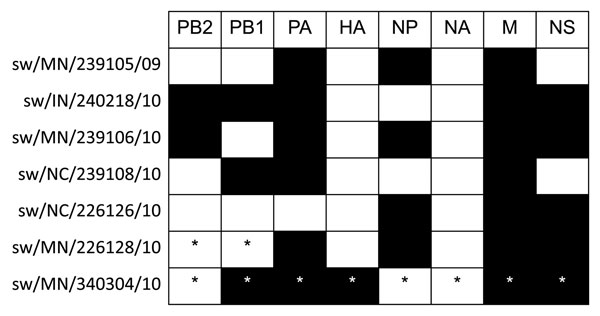Volume 17, Number 9—September 2011
Research
Multiple Reassortment between Pandemic (H1N1) 2009 and Endemic Influenza Viruses in Pigs, United States
Figure 1

Figure 1. Lineages of North American reassortant swine influenza viruses identified through phylogenetic analyses. Pandemic and endemic gene segments are represented in black and white, respectively. *Denotes partial sequences. Isolates sw/NC/226124/10 and sw/NC/226125/10 (not shown) have the same genotype as sw/NC/226126/10. PB2, polymerase basic 2; PB1, polymerase basic 1; PA, polymerase acidic; HA, hemagglutinin; NP, nucleoprotein; NA, neuraminidase; M, matrix; NS, nonstructural.
Page created: September 06, 2011
Page updated: September 06, 2011
Page reviewed: September 06, 2011
The conclusions, findings, and opinions expressed by authors contributing to this journal do not necessarily reflect the official position of the U.S. Department of Health and Human Services, the Public Health Service, the Centers for Disease Control and Prevention, or the authors' affiliated institutions. Use of trade names is for identification only and does not imply endorsement by any of the groups named above.